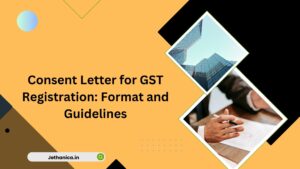Since the rollout of GST in India, Section 73 of the CGST Act has been applied to determine GST demands in genuine cases where there is no fraudulent intent. However, based on the recommendations of the 53rd GST Council meeting, the FY 2024–25 Budget has introduced key changes. This article explains the amendments to Section 73 and their impact on taxpayers.
Understanding Section 73 of the CGST Act
Section 73 outlines the process for determining GST demand in regular cases where there is no fraud, wilful misstatement, or suppression of facts. It applies when:
- Tax has not been paid properly
- Tax paid is less than the actual liability
- Tax has been wrongly refunded
- Input Tax Credit (ITC) has been wrongly claimed or used
Applicability from FY 2024–25 Onwards
Significant changes to Section 73 take effect in FY 2024–25 due to two major developments.
Recommendations from the 53rd GST Council Meeting
- Introduction of a maximum time limit for issuing demand notices
- Reduction of penalties for taxpayers paying tax and interest within 60 days of receiving notice
Amendments through the FY 2024–25 Budget
Following the Council’s recommendations, the Finance Bill 2024–25 introduced Section 74A, replacing some provisions of Sections 73 and 74 from FY 2024–25 onwards.
- Section 73 applies to GST demands up to FY 2023–24
- Section 74A applies from FY 2024–25 with the following changes:
| Provisions in Section 73 | Changes under Section 74A |
| Demand Notice | Issued only if the tax amount exceeds ₹1,000 for the year |
| Time Limit | 42 months from the annual return due date or erroneous refund date; order must be issued within 12 months of the notice, extendable by 6 months (total 18 months) |
| Penalty | Higher of 10% of tax due or ₹10,000; no penalty if tax and interest are paid in full within 60 days of notice |
Section 73 of the CGST Act – Time Limit
Earlier, Section 73 stated that a demand notice must be served at least three months before passing the final order. However, the timelines under Section 73 were unclear, causing confusion among taxpayers. In addition, there was no fixed limit for completing the demand proceedings.
The newly introduced Section 74A now lays down clear timelines:
- The notice must be issued within 42 days from either:
- The last date for filing the annual return, or
- The date of an erroneous refund.
- The last date for filing the annual return, or
- The final order must be passed within 12 months from the date of issuing the notice.
- A Joint Commissioner or an officer of higher rank may extend this period by up to 6 months.
The Demand and Recovery Certificate (DRC) forms are used for the demand process under Section 73.
Replying to a Demand Notice under Section 73
Within the DRC form series, payment intimation can be made to the proper officer using Form DRC-03. To submit a reply to the demand notice, Form DRC-06 is used.
Possible ways to respond include:
- The demand is correct, and payment is pending.
- The demand is correct, and payment has already been made.
- The demand is partially correct.
- The demand is incorrect.
If you disagree with the demand order, you have the right to file an appeal under Section 73 of the CGST Act.
Section 73 of the CGST Act – Penalty Provisions
One of the key reasons for introducing Section 74A in place of the old Section 73 was to give taxpayers relief from penalties in general cases. Below is a detailed comparison of the penalty provisions under both sections.
Penalty Comparison – Section 73 vs. Section 74A
| Situation | Section 73 – Penalty | Section 74A – Penalty |
| Tax & Interest Paid Before Issue of Notice | No penalty | No penalty |
| Tax & Interest Paid Within Specified Period After Notice | Within 30 days → No penalty | Within 60 days → No penalty |
| Tax & Interest Paid After the Specified Period | After 30 days → 10% of tax due or ₹10,000, whichever is higher | After 60 days → 10% of tax due or ₹10,000, whichever is higher |
💡 Key Takeaway: Section 74A provides more time (60 days instead of 30) to make payment without penalty, giving taxpayers greater flexibility.
📌 Related Concepts:
- Knowing the penalty provisions helps avoid unnecessary costs.
- Ensuring correct Input Tax Credit (ITC) claims is crucial to avoid violations under Section 73.
Related FAQs – Section 73 & Section 74A Penalty
Q1. What happens if I pay tax and interest before a notice is issued?
You will not have to pay any penalty under both Section 73 and Section 74A.
Q2. Is there a difference in payment timelines between Section 73 and Section 74A?
Yes. Section 73 allows 30 days, while Section 74A gives 60 days to pay after notice without penalty.
Q3. What is the penalty after the allowed period?
In both sections, the penalty is 10% of the tax due or ₹10,000, whichever is higher.
Q4. Can incorrect ITC claims lead to a penalty under Section 73?
Yes. Wrongly claiming ITC may trigger proceedings under Section 73 if done without intent to evade tax.




